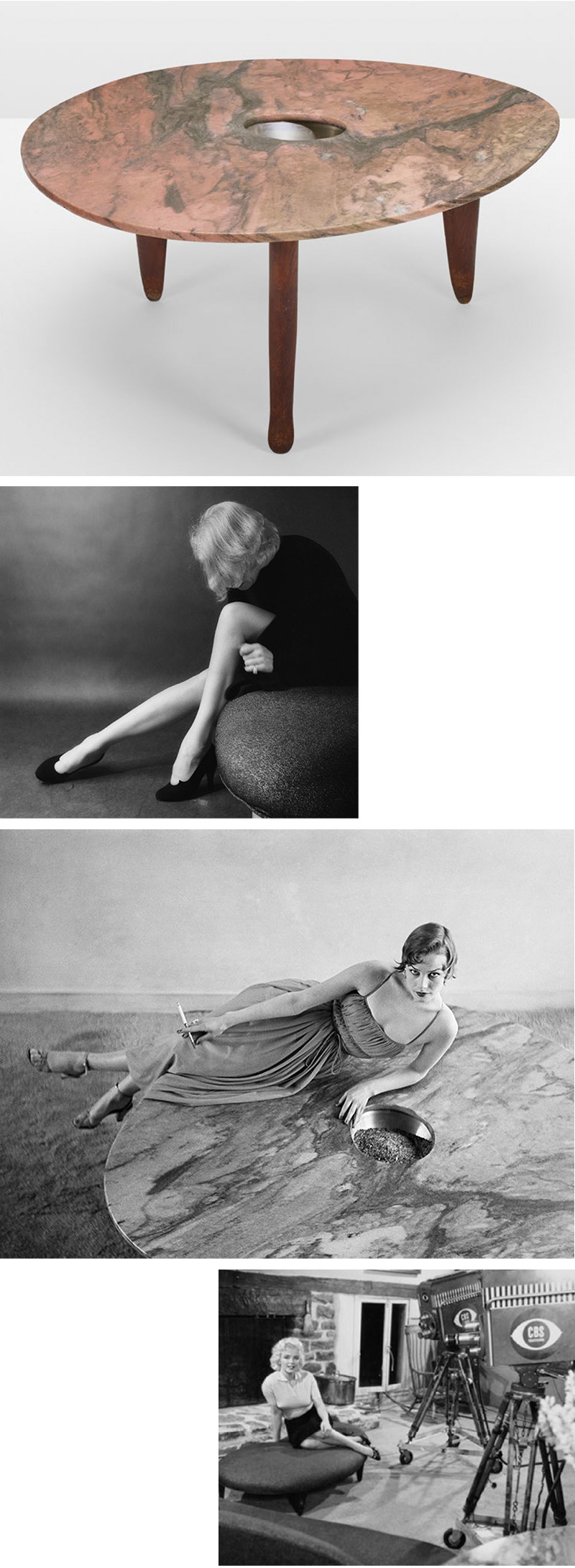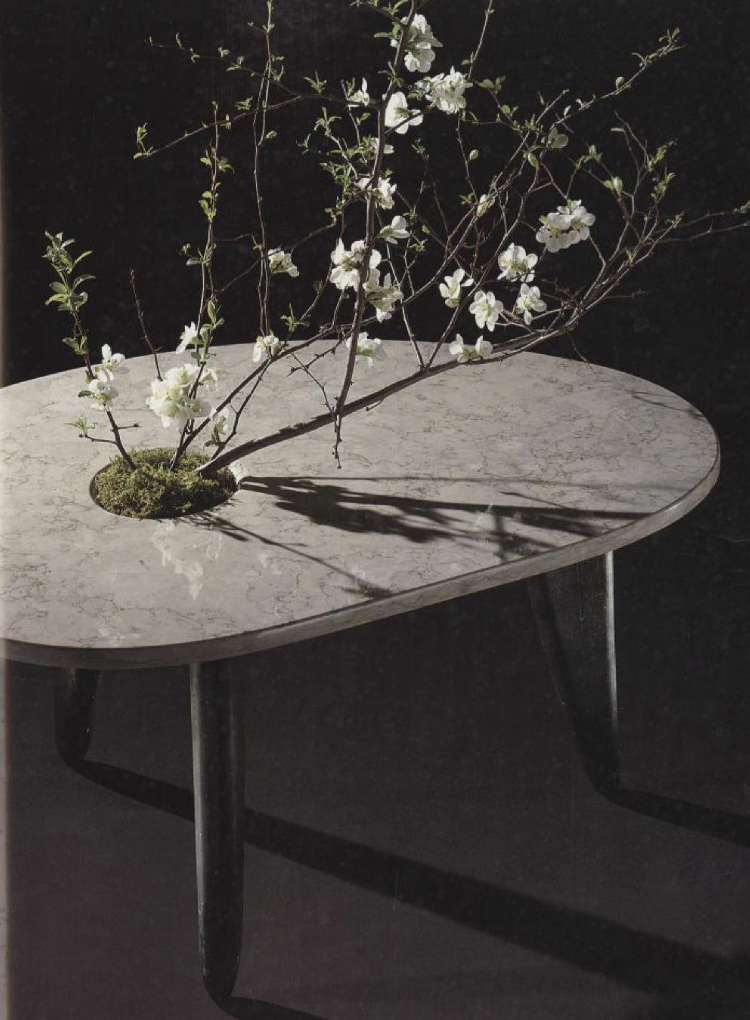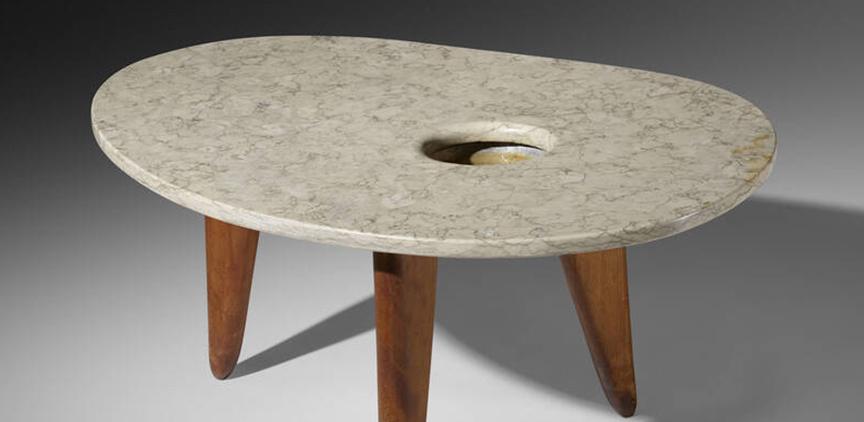The artist’s renowned marble tables often come with storied pasts – including the top spot at Heritage Auction’s Fall Design Event.
When Heritage Auction’s Fall Design Event officially launches on November 1, the priciest item on the block is a rare, marble-topped table by renowned 20th century Japanese American artist, designer, and sculptor Isamu Noguchi. Valued at a $1 million, the piece is the quintessential melding of form and function.

“It’s certainly among the most important works of design to come to auction this year, believed to have been hand carved by the artist in his studio during a particularly experimental and prolific period of his career,” said Samantha Robinson, Heritage’s Director of Decorative Arts & Design. “The closer a work is to the hand of the artist, the more valuable it is.”
Still, it wasn’t until the table’s owner/consignor contacted a Heritage Design specialist that she realized its real value. For starters, it’s one of only four known examples of Noguchi’s famed Model IN-62 collection. “We were able to confirm that the family had a master work on their hands,” said Robinson. “It’s such a compelling piece, but has this sweet story attached to it. A totally average American family home has this other worldly object in the middle of the room.”
Another of Noguchi’s tables, a slightly larger version in pink Georgia marble, comes with its own storied history. Designed for fashion photographer Milton H. Greene, it was part of a commission that also included a one-of-a-kind “free form” sofa and ottoman.

Unprecedented at the time, Greene used the furniture in his photo shoots, breaking boundaries by recognizing the artistic importance of utilitarian objects. Shown above, his most iconic images: actress Marlene Dietrich sitting on the sofa and fashion model Pat Donovan reclining flapper style across the table. The photographer was also a close friend of Marilyn Monroe, who sat on the ottoman for a CBS press photograph in 1955 (the table is in the foreground).
Each of Noguchi’s tables share common characteristics, most noticeably three asymmetrically placed, hand-carved legs. There’s also a hole that holds a recessed spun aluminum bowl, intended for a plant or floral arrangement. The marble top, inherent in its natural beauty, makes every table unique. More than just a matter of aesthetics; the selection reflects the artist’s dedication to making an ordinary item extraordinary.

Although primarily a sculptor, later in his career Noguchi began designing furniture for mass production with Herman Miller. The Noguchi table, his most renowned and recognizable piece of furniture, remains popular with today.
Throughout his career, Noguchi worked with myriad other materials including stone, metal, wood, clay, bone, paper or a mixture of any or all. “To limit yourself to a particular style may make you an expert of that particular viewpoint or school, but I do not wish to belong to any school,” the artist is quoted as saying. “I am always learning, always discovering.”

